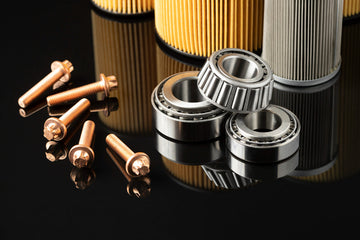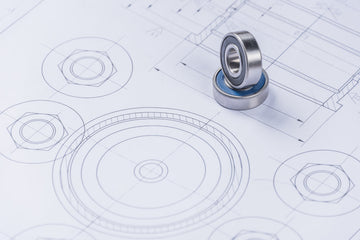Bearings are essential parts in various industrial uses, which facilitates an easy movement of rotating or linear movements, through the minimization of friction between the moving components. To bearings to work to their best, they must be well lubricated. Lubrication insurance prolongs the life and efficiency of the bearings, curbs the wear and tear, accumulation of heat, and chances of failure. As part of this blog, we will discuss the various forms of bearing lubricants, their advantages and the way you choose the most appropriate form of lubrication to use in your machine.
Importance of Bearing Lubrication
Lubrication has the benefit of acting as an insulator between the moving components of a bearing, and eliminating friction between the parts. Devoid of adequate lubrication, bearings may get overheated, they wear out and fail prematurely resulting in expensive repairs and down times. Thus, it is important to know the kind of bearing lubricants that are in the market and how they can be used to achieve the best in any machine.
Types of Bearing Lubrication
Bearing lubrication is of several types and is intended to satisfy a particular requirement, depending on the operating conditions, load conditions and the nature of bearing. The most popular are listed below:
1. Grease Lubrication
Grease is among common bearings lubricants. It is a viscous oil which is typically combined with a soap-based thickener to remain in place and offer a long duration of lubrication. Grease tends to be used in those applications where the seal or shields between the lubricated and stationary parts discourage the lubricant being replenished regularly.
Advantages of Grease Lubrication:
- Gives excellent sealing characteristics to exclude the contaminants in the bearing.
- It is best suited to the low speed and light load applications.
- Good corrosion inhibitor, friction-reducing, and level of lubricating agent over time.
Grease lubrication is particularly popular in the automotive, food processing and construction industry, in which reliability is paramount, and bearings are subject to dirt and moisture.
2. Oil Lubrication
Oil lubrication is fluid than the grease and is normally applied in jobs that demand higher speed and capacity to carry heavy loads. Oil may be employed in two modes, in bath or circulation system.
In the industrial machinery, motors, and turbines, oil lubrication is often applied, and there high efficiency and performance are decisive. The dissipation capacity of oil also predisposes it well with regards to high velocity applications where grease would disintegrate at a faster rate.
3. Solid Lubricants
Graphite, molybdenum disulfide and PTFE (Teflon) are some solid lubricants that are applied in some specialty applications. These lubricants are frequently employed when the normal grease or oil would be inappropriate in severe temperatures, stresses or contaminations.
4. Dry Lubrication
Dry lubrication is where powders or coating are used to lubricate bearings without liquids. Usual examples are dry graphite, or MoS2 (molybdenum disulfide) coating of bearing surfaces. In places where the liquid lubricants can generate contamination or where there is no ability to carry out lubrication maintenance, dry lubrication is commonly used.
5. Oil Mist Lubrication
In oil mist lubrication, small oil droplets that are combined with air are used to lubricate bearings. It is applied in processes where it is either hectic or not possible to lubricate the oil bath, like in high-speed machines, or in places where there are strict environmental regulations.
Selection of The Right Bearing Lubrication
The choice of the appropriate bearing lubrication type is determined by a number of factors and they include:
- Speed and Load Requirements: in high-speed applications, oil lubrication or oil mist systems can be the best choice because they have the best heat-dissipation capabilities. Conversely, when the speed of the bearing is low or medium load, grease can be adequate.
- Operating Temperature: The solid lubricants or high-temperature greases may be needed in an environment where the bearing is subjected to high temperatures. Dry or oil lubrication could be used in low-temperature applications.
- Environmental Conditions: Sealed bearings that have grease lubrication can be wanted in dusty, wet, or chemical-laden environments, where they can exclude contaminants.
- Maintenance and Accessibility: Grease lubrication can be most convenient with bearings that are difficult to reach in order to change the oil regularly. On the other hand, the oil systems may be less tricky to operate with more precise machinery that ought to be lubricated on a regular basis.
Conclusion
In most industrial uses, bearing reliability depends on the ability of the bearing to be lubricated. The appropriate type of lubrication can greatly increase the life of bearings and the subsequent costs of maintenance and the performances. The grease, oil, solid or dry lubricants are optional determinants based on the needs of the application. Such brands as Bearmax USA offer lubricants of high quality, which can serve the requirements of the different industrial areas and be sure that your bearings work effectively and in a high-quality way. Now when you know which types of bearing lubrication are available and how they can be of benefit to you, you will be able to make more informed choices and ensure maximum performance and longevity of your equipment.





